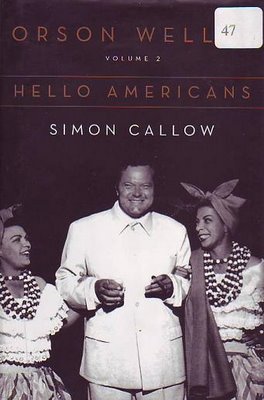 You don't need a crystal ball to see that anime is poised to make a big impact on the American market, even bigger than it's made so far. Somewhere down the line someone will make the breakthrough anime that'll push Disney and Pixar off the map. It's only a matter of time.
You don't need a crystal ball to see that anime is poised to make a big impact on the American market, even bigger than it's made so far. Somewhere down the line someone will make the breakthrough anime that'll push Disney and Pixar off the map. It's only a matter of time. Me, I'm not an anime fan. I know there's been some good stuff done in that medium but there's also an awful, awful lot of kitch. I mean big, hulking mountains of it! All the cute girls with gigantic, cute Bambi eyes, cute and oh so precious hairstyles, and cute little outfits with cute little boots... Cute! Cute! Cute! Even the guys are cute! Man, I'm getting a sugar overdose here!
Me, I'm not an anime fan. I know there's been some good stuff done in that medium but there's also an awful, awful lot of kitch. I mean big, hulking mountains of it! All the cute girls with gigantic, cute Bambi eyes, cute and oh so precious hairstyles, and cute little outfits with cute little boots... Cute! Cute! Cute! Even the guys are cute! Man, I'm getting a sugar overdose here! And how do you like anime plots ? "Ganzu, the cute princess of cutania must get the power ring back that was stolen by Power lad and his Power Pals. A fight ensues with Power Lad shooting power beams at the cute girls and their cute, fuzzy little animal friends. Eventually Power Lad and his Power Pals realize the've been manipulated by the evil Ganzuni. Another power beam fight ensues with the cute forces in beautiful outfits joining with the powerful Power Pals (also in cute outfits and hairstyles) against Ganzuni. The good guys win. " Aaaaarggghh!!!!!
And how do you like anime plots ? "Ganzu, the cute princess of cutania must get the power ring back that was stolen by Power lad and his Power Pals. A fight ensues with Power Lad shooting power beams at the cute girls and their cute, fuzzy little animal friends. Eventually Power Lad and his Power Pals realize the've been manipulated by the evil Ganzuni. Another power beam fight ensues with the cute forces in beautiful outfits joining with the powerful Power Pals (also in cute outfits and hairstyles) against Ganzuni. The good guys win. " Aaaaarggghh!!!!!BTW, I didn't draw the picture of power Lad and his Powerful Beams of Power above.













